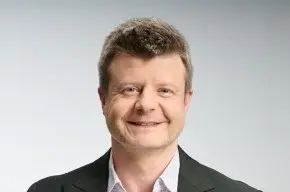ANALYSIS: EEX looks to build Nordic power open interest under new incentive plan
11th June, 2025|Gregory Rosenvinge

The European Energy Exchange (EEX) has said its new Nordic power incentive plan will help build open interest, ahead of the Deutsche Boerse-owned exchange's September roll-out of a raft of benefits for traders.
EEX sales director Tim Greenwood told FOW the new incentives, which were announced last week and take effect in September, are more varied and extensive, as the firm looks to build liquidity in the market.
“What we are doing is not just fee-related or just throwing money towards the market and expecting a different result," Greenwood (pictured) said in an interview. "The financial incentives are important but the big new one is building the package to be able to build open interest. That wasn't on the table last year, and is quite substantial - we think it will have the most effect in the market.”
Leipzig-based EEX on Wednesday last week said it will introduce on September 1 various measures to stimulate trading of its Nordic power futures. This includes waiving trading fees for a year, launching a market-maker scheme for all EEX power contracts, while “initiators of a transaction” will also be able to cover clearing costs. Cross-margining across its European and Nordic power markets will also provide a cost benefit to clients, Greenwood added.
“We also think the establishment of cross-margining Nordics and the continental markets is extremely important for the actual cost of trading, not just the fees and incentives to actually trade, but the actual general cost of trading as well,” he said.
Euronext in late January agreed a deal with Nasdaq to buy the US group's Nordic power futures market, pitching it into direct competition with Leipzig-based EEX.
“When talking about competition, cross-margining is a big competitive advantage that we have in terms of its saving potential for companies trading other power products, as well as our proven track record in other markets,” EEX’s Greenwood told FOW. “The impetus for the measures is that we want to actually get stuff moving on the Nordics.
“We had our previous deal with Nasdaq not go through, and we've more or less had a year where little has been going on in terms of a push, which has been noticed by existing and potential clients. There wasn't that much interaction from our side because we've been held back from doing so. We're now able to go full steam ahead and put together a package of measures which we feel would work to actually build liquidity and boost the trading activities on the platform with us.”
“When everybody says the liquidity has disappeared in the Nordics, what they mean is that our target groups - these companies that trade elsewhere - have just pulled back from the Nordic market for trading. It's not necessarily that the whole of the member base is doing less, as a lot of the utilities – whether small, medium or large in size – are still active in the market,” EEX’s Greenwood told FOW.
“It's that other segment – diversified trading firms - which have actually disappeared. If you want them to return, you've got to get them active in the Nordic market again. And how you actually do that is the question we’re tackling – you have really got to target what it actually means to get the liquidity going to get because getting it moving is quite broad.”
The EEX sales director also pointed to recent successes in building power markets in other geographies. EEX launched its Japanese power futures offering in 2020, adding its first Japanese power base options on February 3. This followed EEX’s Japanese power derivatives trading volume surging 299% to a new record of 72.9 terawatt hours (TWh) in 2024 from 18.3TWh in 2023, according to the exchange. Meanwhile, EEX’s volumes surged 246% year-over-year in Japanese power futures to 10.9TWh last month.
“These measures are a good mix of what is actually needed to kickstart the market based on our experiences of doing that with other geographies. EEX has got quite a good track of record of building up markets like the Italian markets, Spanish markets and the Japanese market recently, getting in there from absolutely no open interest or no trading activities to actually becoming a market leader. You learn from it what works and what doesn't work,” Greenwood said.


